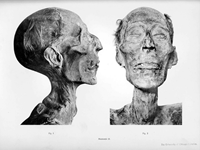NASA astronaut Jeanette Epps took a spectacular photograph from the ISS (International Space Station), looking down on Earth from a unique angle. The image, captured with a long exposure technique, shows the stars shining above the atmosphere and the beauty of the Earth.
Epps increased his camera's ISO setting to 3200 to capture more detail in low light conditions. After placing his camera in one of the station's large windows, he pressed the shutter button. The 68-second exposure resulted in a masterpiece that shows the traces of Western Australia's city lights and the mesmerizing movement of stars surrounded by a golden-red belt of atmosphere.
Such images provide visual proof that the space station and astronauts orbit the Earth at 17,500 miles (28,000 km) per hour. It also allows NASA astronauts to refine their camera techniques and shows that these techniques can also provide stunning views on Earth.
Image description:
In the lower half of this image, shown on two slides, the Earth glows in golden hues as a red atmospheric glow curves above. Yellow city lights stretch horizontally across the Earth, while star trails form a circular pattern in motion directly above.
Credit: NASA/Jeanette Epps
How does it look from this point of view?


 Nielawore
Nielawore









Yorumlar
lovely
nice
Yorum yazmak için lütfen giriş yapınız